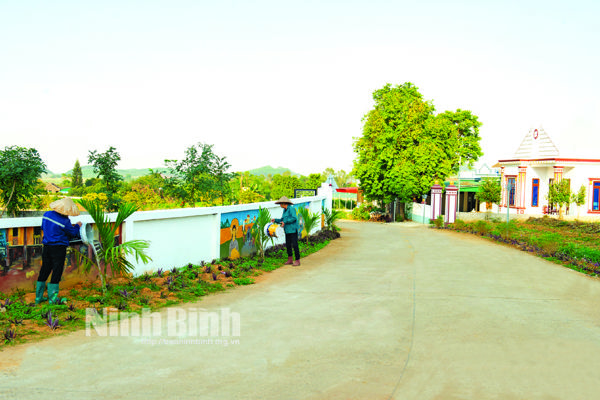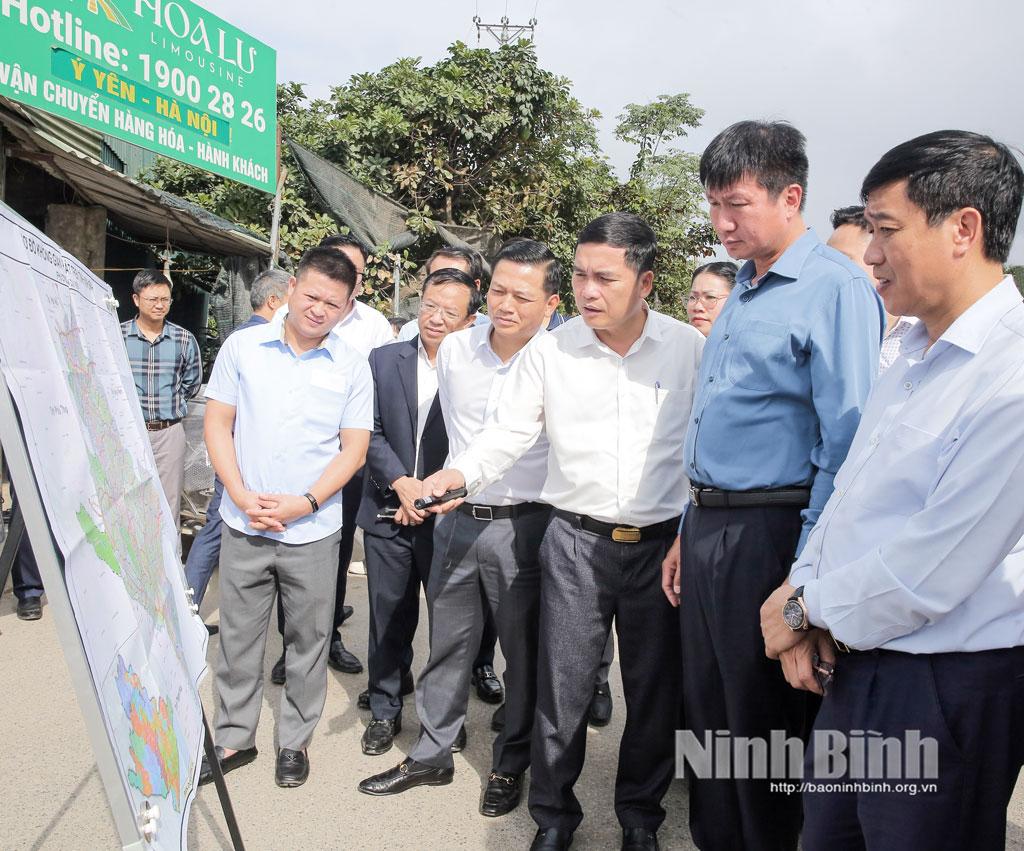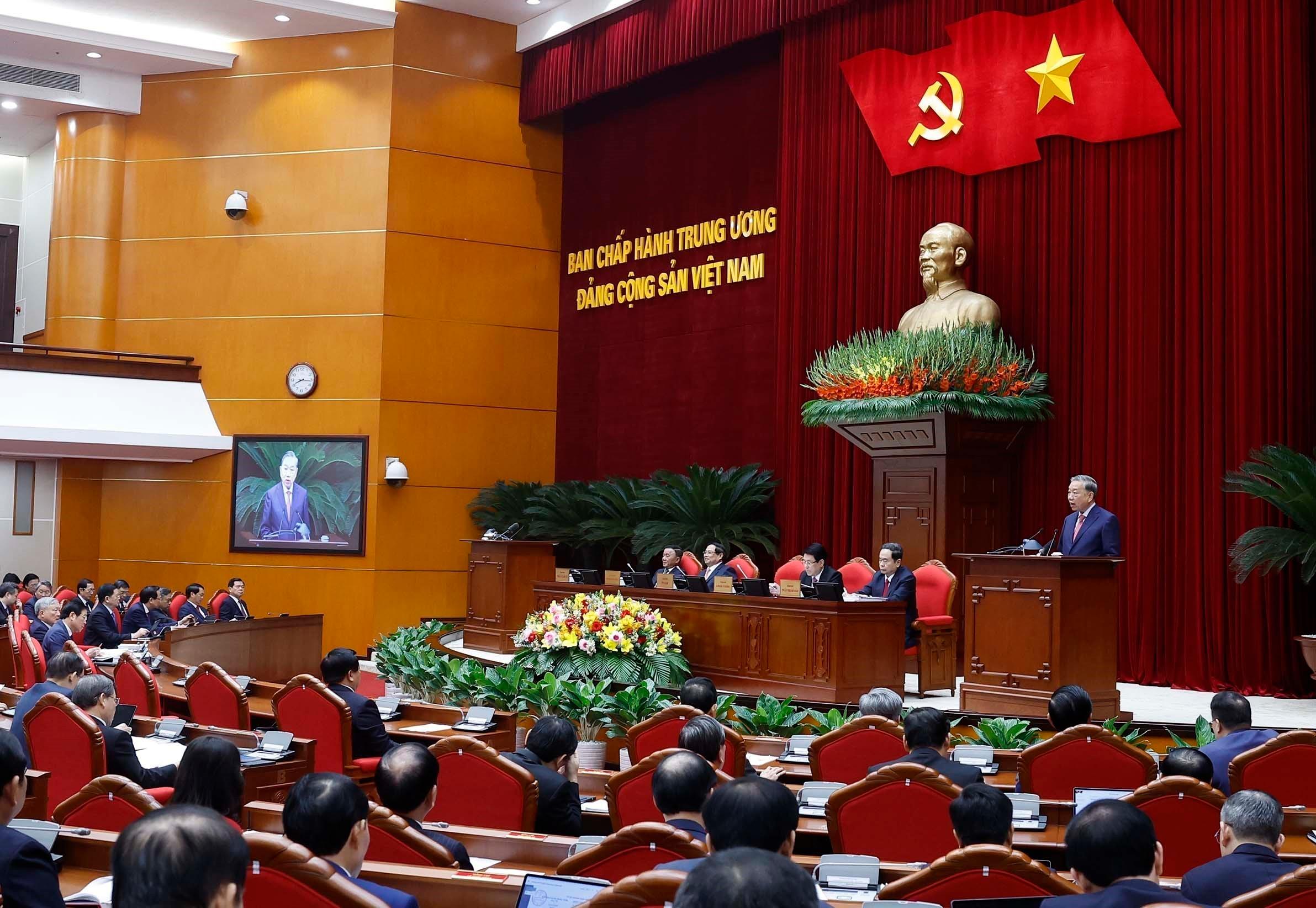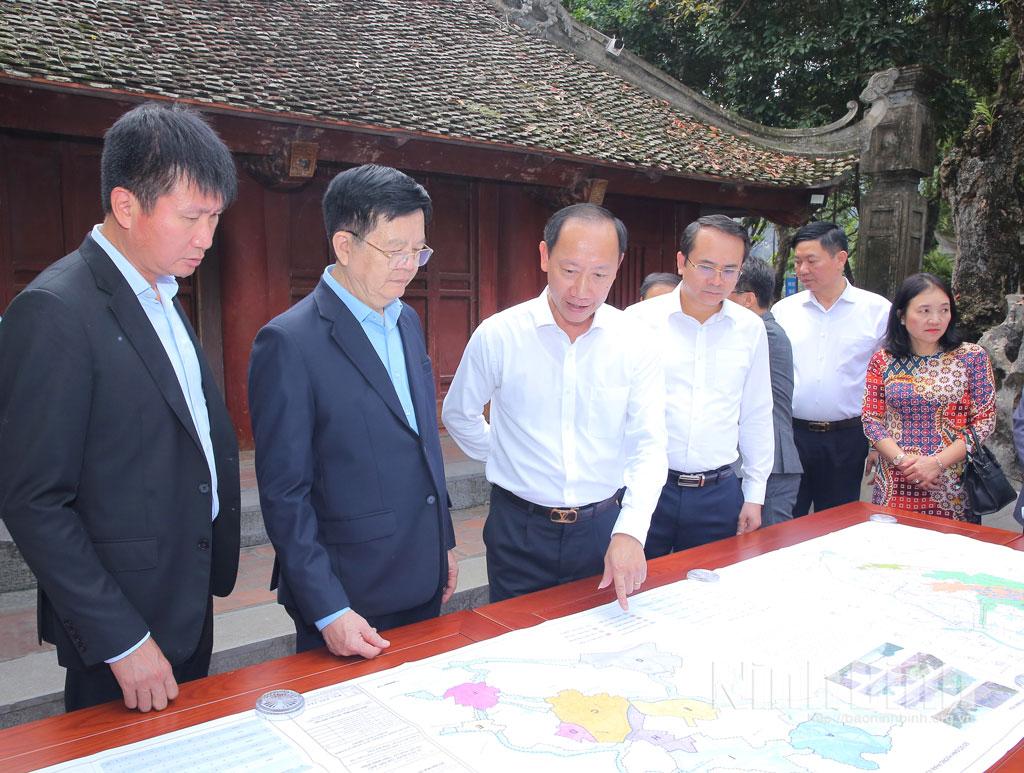From an agriculture-based province with poor infrastructure, a high poverty rate and low income, Ninh Binh has become a bright spot nationwide in building new-style rural areas.
Raising from the poor land
When began the building of new-style rural areas in 2010, Ninh Binh faced numerous difficulties. It was an agriculture-based province with poor infrastructure, a high poverty rate and low income. Its agricultural production was ineffective with land fragmentation, no chain value and backward countryside.
Under criteria set for new-style rural areas, communes across the province met an average of 4.8 criteria. Three communes met 10 or higher criteria. The per capita income was 13.2 million VND per year while over 12% of its population were poor people.
Thanks to the drastic direction and guidance of the provincial authorities and the participation of the whole political system and the consensus of local people, the programme has been carried out widely in the province.
Coastal Kim Son district, the mountainous district of Nho Quan, Gia Vien, Yen Mo and Hoa Lu districts all have expedited the programme in a creative and flexible manner in line with their conditions.
Ninh Binh has strongly mobilised resources to implement the building of new-style rural areas throughout the province. The total resources mobilised for the programme amounted to more than 68.3 trillion VND (2.63 billion USD), of which the state budget capital accounted for 24%, the rest was credit capital, contributions from enterprises and especially from the people, amounting to nearly 13 trillion VND. People not only contributed money, but also donated thousands of hectares of land to expand village roads, alleys, build public works; and hundreds of thousands of working days.
The highlight of the new-style countryside building movement in Ninh Binh province must include the remarkable changes in rural infrastructure: 100% of inter-commune, inter-village, and main intra-field roads were hardened or concreted, 97% of alleys were clean, bright-green-beautiful. Irrigation systems, electricity, schools, medical stations, and basic culture were invested synchronously, ensuring good service for people's lives.
The rural economic structure has also changed significantly. From mainly relying on agriculture, the proportion of agriculture, forestry and fishery in the province is now only 10.1%, while industry and construction account for 41.3%, and services account for 48.6%. The average GRDP per capita reaches more than 96 million VND a year, the average value per hectare of cultivation reaches 160 million VND a year.
Effective production models, cooperatives, and new-style cooperatives have been formed and developed, linked to the value chain, applying science and technology, contributing to increasing product value and protecting the environment.
The OCOP programme has made a clear mark, with 209 products ranked (including 67 4-star products), many products have become typical tourist gifts of Ninh Binh such as crispy rice, Kim Son wine, Gia Vien shrimp paste, and Bo Bat pottery.
At the same time, the rural tourism development programme has helped traditional craft villages such as Ninh Van, Van Lam, Sinh Duoc and Yen Thanh become attractive destinations.
The rural landscape has also changed positively. Models of clean houses - beautiful gardens, model flower roads, green - clean - beautiful villages have spread strongly.
Towards civilised and modern new rural areas
Determining that building new-style rural areas is an endless process, Ninh Binh is continuing to summarize practical experiences, drawing lessons to move towards the journey of implementing the construction of advanced, model and smart new-style rural areas.
Currently, the whole province has 76 communes meeting advanced new-style countryside standards (accounting for 63.8%) and 2 out of 6 districts meeting advanced new-style standards. Notably, 24 communes have implemented the "smart village" model, where digital technology is applied in management, production, communication and provision of public administrative services.
The digital transformation programme in new-style rural area construction in Ninh Binh is synchronously integrated with the National Digital Transformation Programme and has been systematically implemented. People have begun to get acquainted with smart agricultural applications, digital commerce, and product promotion on digital platforms.
Looking back on the journey of nearly 15 years, it can be affirmed that the new-style rural area building programme in Ninh Binh not only brings a spacious rural appearance, but also forms a solid foundation in terms of economy, culture, society, security and national defence. That is the launching pad for Ninh Binh to aim for further goals, becoming a centrally-governed city with the characteristics of a Millennium Heritage City and a creative city.











